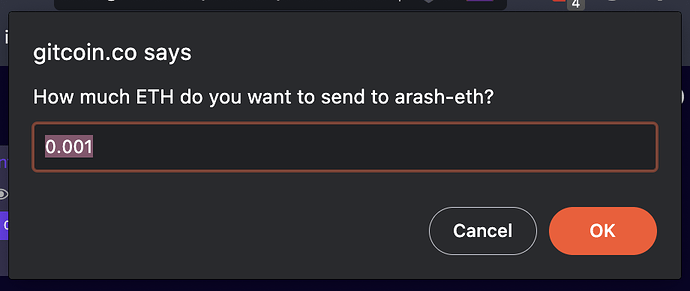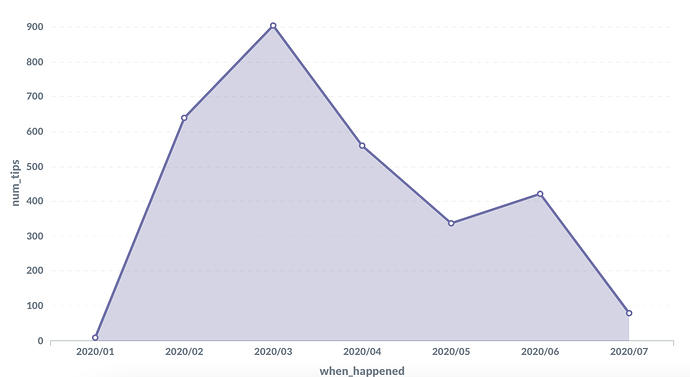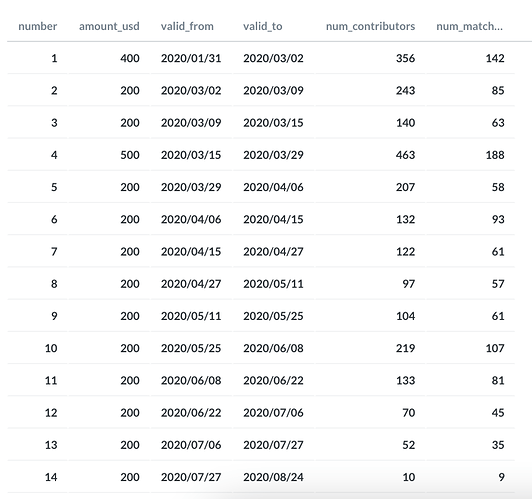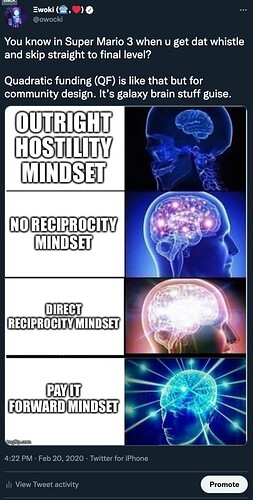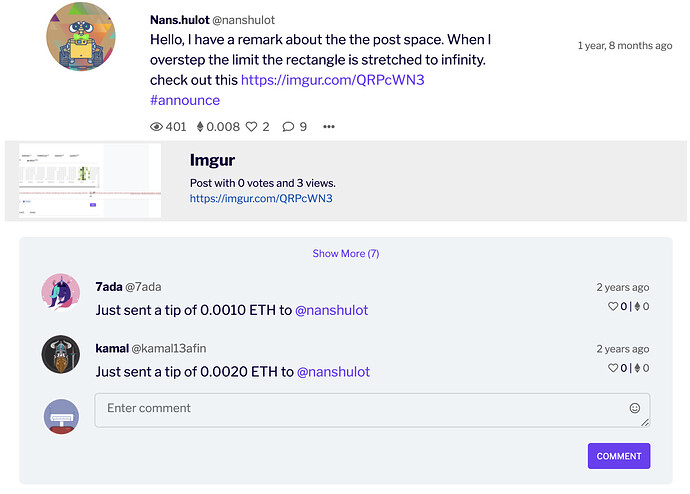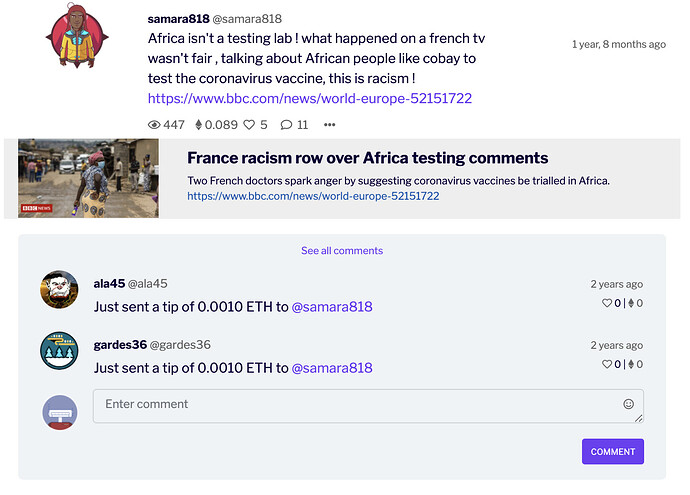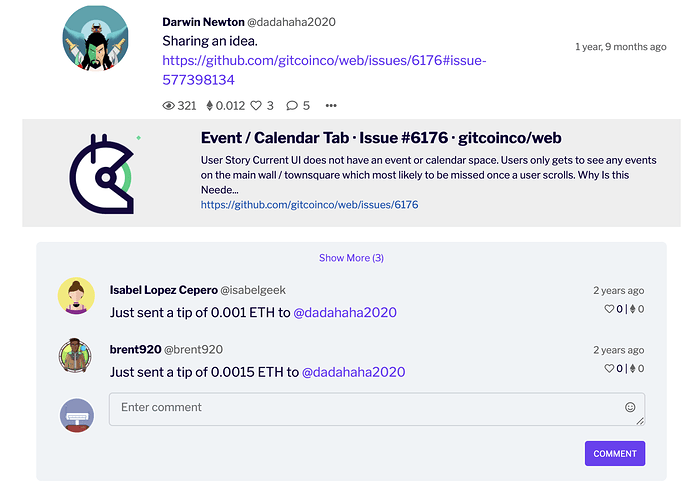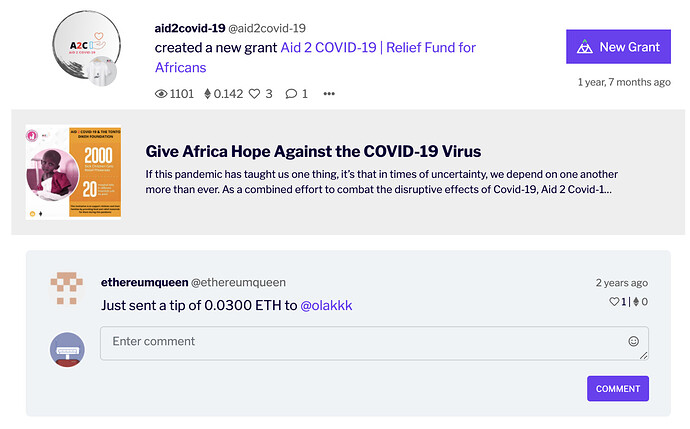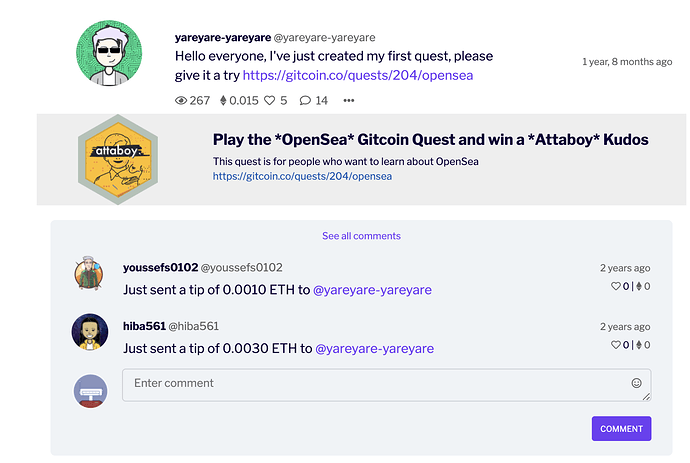Note: This post assumes the reader is already familiar with what makes Quadratic Funding Powerful. If that is not you, please checkout https://wtfisqf.com/ first!
The Quest for a better social network.
In July 2021 Ethereum Founder Vitalik Buterin shared a list of things that matter in Ethereum past Defi, which listed the following
Sign in with Ethereum, Social Networks, Public Goods
Yesterday at the RadXChange Denver 2021 Conference, during the “Regenerative CryptoEconomics” breakout, we explored the problems with web2-era social networks, and what a web3-era social network that was more regenerative to the ecosystem it served might look like.
These two experiences have inspired me to write up a document detailing an experiment that I spearheaded at Gitcoin in early 2020 involving public goods + social networks.
The Experiment
The Social Network
One problem that novel social networks have is how to bootstrap their network effects.
Before you have any users on your social network, you won’t have any utility for people who join. Before there is any utility for people who join, there won’t be any users on a network. It’s a vicious cycle.
Gitcoin didn’t have that problem at all, because
- Gitcoin Grants were growing rapidly during the bear market.
- Gitcoin Hackathons was too.
- In early 2020, we we had 20k active users and had already delivered about $4mm to OSS developers.
The Gitcoin Activity Feeds
With this growing usage, we were trying to figure out a few things:
- How could we make Gitcoin feel more like a community? Give it a shared space where you could have chance encounters just by showing up.
- How do we surface novel/interesting ways ton show the activity of the network?
- People would come to Gitcoin once or twice a quarter to contribute to a hack or grant, how could we get them coming back more to partcipate in our mission often?
In 2020, we had been experimenting with building a handful of ways to solve these problems, and Gitcoin’s Townsquare was one of them.
It was place where we could aggregate all of the interesting happenings across Gitcoin into one place. After all, lots of interesting public goods funding was happening on Gitcoin, and stepping into the ‘Townsquare’ would be a novel way to navigate that, right?
The idea ended up looking something like this:
Looks like a standard newsfeed, right?
It is.
And just like that, we stumbled into building a web 2.5-era social network. The ux felt like web2, but it was web3 enabled, so we playfully call this era of Gitcoin web 2.5. ![]()
Let’s not zuck it up!
The problems with web2 social networks are well documented elsewhere. They aren’t forkable, they create polarity, they’re like battle royales where nasty arguments can develop.
We were determined to leverage our web3-ness to mitigate some of these problems and create something novel.
We were also interested in using this town square tool to solve the problems of people who were already on Gitcoin. Members would share lots of different types of things on their Gitcoin newsfeeds.
- They’d promote their grant.
- They’d try to hire people.
- They’d ask how Gitcoin worked.
- They’d ask for customer support.
- They’d share memes.
One of the consistent themes I’d seen was that when people had a job to be done, they’d come to the newsfeed + ask for help from the community.
But we weren’t seeing many people show up to answer questions, to explain how things work, or to give thoughtful feedback.
So we started experimenting with ways to solve this problem.
Tipping
In order to create incentives for people to help each other, and to build in public on a web3 primitive, I built the ability to tip other users in the newsfeed.
Here’s what it looks like:
You can send a tip by clicking on the little Ether symbol on the newsfeed.
and decide how much to send in the next dialogue.
Tips > Likes
Likes are the ultimate shitcoin! They’re infinite supply, you can’t spend them on anything. They’re like little ephemeral dopamine rushes to consume, but they leave the creators who receive them feeling empty!
One of the things we wanted to prove here was that it was possible to build a social network on something more web3-native than likes.
I wanted to provide something more valuable to our users than likes. It felt intuitively like a micro-tip was a better measure of whether a piece of content was actually truly valued or not.
People like something when it creates a visceral reaction. People tip someone when they feel like they’ve truly been provided value.
There is a subtle but important difference there.
… but who cares about earning 30cents?
At the time of this experiment, 0.001 ETH was about 30c. And gas fees on the Ethereum mainnet were low enough that you could send a 30c transaction without worrying about gas. Ahh those were the days!
One thing that we saw when we launched tips was that people weren’t really using it. And when we asked them why they weren’t using it, the answer us unequivocally “meh, 30c, who really cares?”
So we tried an experiment. We took the biggest, most powerful mechanism we know of, Quadratic Funding, and pointed it at the problem.
Mini Quadratic Funding 
In early 2020, I quietly launched a thing we called “Mini Quadratic Funding” Rounds.
It was a $200 per week subsidy to those who were providing helpful commentary to the platform. Here’s how it looked:
Every week we put 200 DAI into a matching pool, and we loudly advertised to the users that if they received tips they would receive quadratic matches (just like they already did in Gitcoin Grants).
Here’s a module that advertised the leaderboard of the Mini CLR Rounds

We have a hit!
Over the next few months, people sent 100s of tips:
The median tip amount was the default amount, 0.001 ETH ($0.30 at the time), but the median match amount was 0.005ETH ($1.50) at the time.
Here was the distribution of tip amounts by num tips:
Over the subsequent weeks, we ran 14 successive Mini QF Rounds, with 2,348 contributions resulting in 1,085 matching payouts/
Behavior Change
Most importantly, we saw a large behaviour change in the participants.
- DAUs went up.
- Community members seemed to really care about climbing the leaderboard.
- They went from passively ignoring each others help requests, and more actively helping to problem solve - directing support requests to the relevant Knoweldege Base entries, answering questions about the network.
Effectively, this experiment it created a class of community member that earned by being helpful + providing value.
I tweeted about the behaviour change we saw:
A Sybil Resistance Honeypot
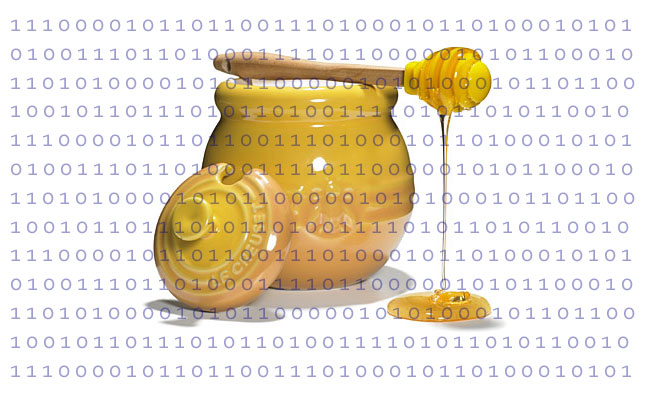
One other benefit of the Mini QF experiment was that it allowed us to speed run the sybil resistence tools we were quietly building for use in the main Gitcoin Grants rounds.
The main Grants rounds were 1x/quarter, and having a honeypot 1x/week QF round meant that we could see how attackers were attacking the system and learn about how to mitigate it even better.
Some of those insights endure as a major part of our sybil resistance strategy today.
Overcome by events.
Unfortunately, circumstances turned against the experiment:
- gas fees on the eth mainnet went up in summer 2020 (colloquially known as DEFI summer)
- we moved onto other things, like integrating ZKSync into Gitcoin Grants or adding a bulk checkout on Gitcoin Grants, or trying to figure out what GitcoinDAO would look like. Or the move towards creating a new landing page & navigation structure for Gitcoin, so people could get around easier. Or the imminent spinout from Consensys
Because of those events, we had to abandon the mini QF experiment and refocus on our core - Gitcoin Grants.
But I continue to think there is the KERNEL of a great idea here. What if we replaced likes with micro-tip subsidies all across social media? Would we close the asymmetry between value created and value captured for creators on social media, and realize Vitalik’s dream of web3 social media?
These are big ideas. I hope that I have played a small part in validating them. I continue to be focused on building Gitcoin Grants.
If anyone wants to take up this mechanism, please reach out. I’d love to support you.
example posts
edit; 12/19/2021, i’m attaching a few examples of posts here that got a lot of tips from 2020, so give a sense of what kind of posts this mechanism optimized for…



